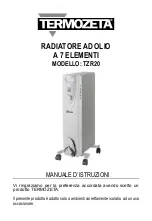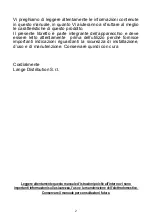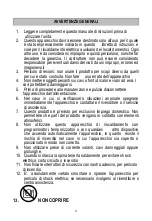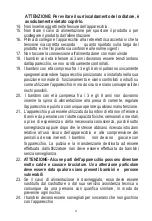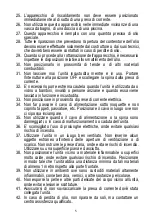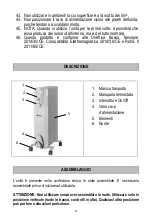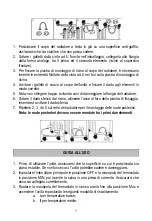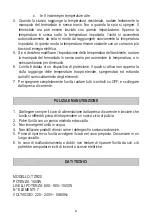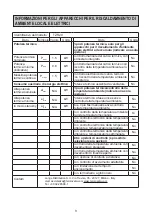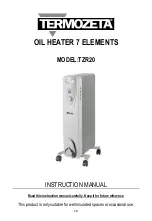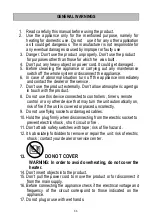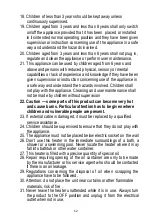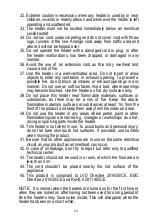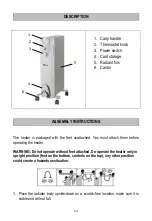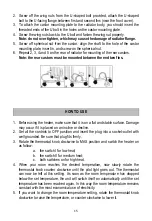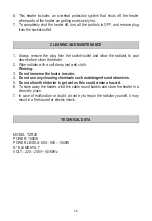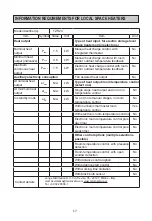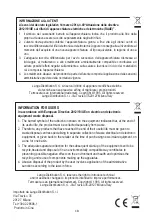
15
2.
Screw off the wing nuts from the U-shaped bolt provided, attach the U-shaped
bolt to the U-facing flange between first and second fins (near the front cover).
3.
To attach the castor mounting plate to the radiator body, you should insert the
threaded ends of the U bolt in the holes on the castor mounting plate.
4.
Screw the wing nuts back to the U bolt and fasten the wing nut properly.
Note: do not over tighten, which may cause the damage of radiator flange.
5.
Screw off spherical nut from the castor, align the shaft to the hole of the castor
mounting plate, insert in, and screw on the spherical nut.
6.
Repeat 2, 3, 4 and 5 on the rear of radiator for mounting of the rear castors.
Note: the rear castors must be mounted between the end two fins.
HOW TO USE
1.
Before using the heater, make sure that it is on a flat and stable surface. Damage
may occur if it is placed on an incline or decline.
2.
Set all the controls to OFF position and insert the plug into a socket-outlet with
well grounded. Be sure that plug fits firmly.
3.
Rotate the thermostat knob clockwise to MAX position and switch the heater on
as follow:
a.
the switch I for low heat;
b.
the switch II for medium heat;
c.
both switches on for high heat.
4.
When your room reaches the desired temperature, now slowly rotate the
thermostat knob counter clockwise until the pilot light goes out. The thermostat
can now be left at this setting. As soon as the room temperature has dropped
below the set temperature, the unit will switch itself on automatically until the set
temperature has been reached again. In this way the room temperature remains
constant with the most economical use of electricity.
5.
If you want to change the room temperature setting, rotate the thermostat knob
clockwise to raise the temperature, or counter clockwise to lower it.

